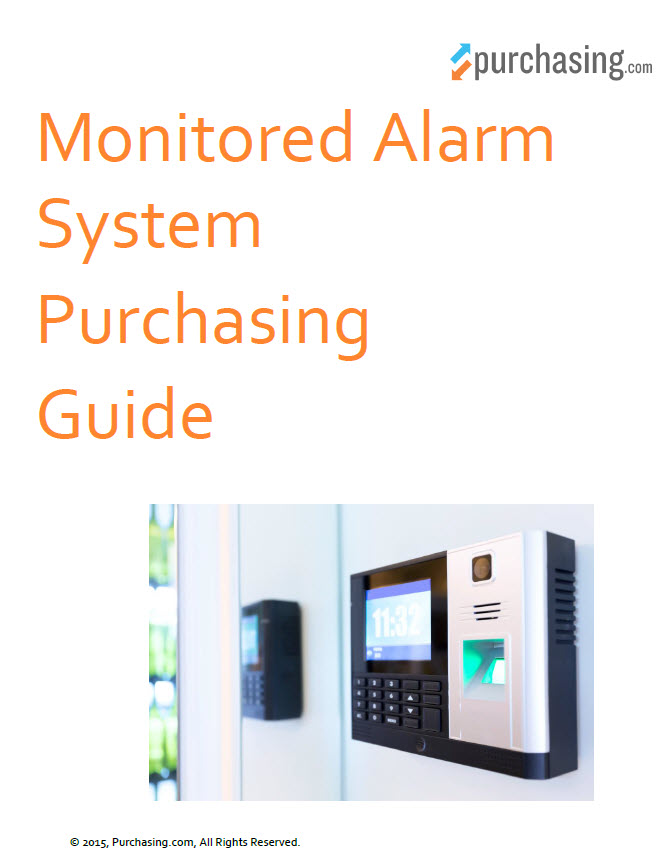Introduction to the Monitored Alarm System Buying Process
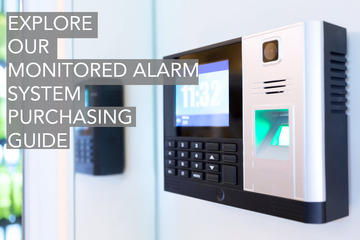 Table of Contents
Table of Contents
- Introduction
- Trends
- Types
- Devices & Features
- Advanced Features
- Monitoring Services
- Choosing a Dealer
Introduction
Monitored alarm systems are a necessity. Today, most office buildings and industrial sites have a comprehensive alarm system in place. Each of these establishments, however, require a specific system that has unique characteristics and features to fulfill a set of needs.
It is important to understand the differences between various alarm systems and the many features they contain. While a small office building may only need the most basic alarm equipment and features, an industrial site that has many smaller buildings within its premises, each of which works independently, requires a system that has double the capability than the previous one.
Benefits
Office buildings can benefit from monitored alarm systems because they give a sense of security to employees and staff members, in addition to protecting important documents and belongings. In a retail landscape, the need for alarm systems is paramount. These systems protect valuable and expensive brands and products, and help management keep an eye on the daily operations in the store. In the event of pickpocketing, issues can easily be resolved with the help of a monitored alarm system.
As mentioned before, industrial businesses benefit from alarm systems as well due to the ability to span a wide area; such systems make monitoring easy. Furthermore, alarm systems, with camera footage, provide a constant checking mechanism that is useful in spotting mistakes and slips on the assembly line and manufacturing units.
Purchasing considerations
Choosing a monitored alarm system is not a spur of the moment decision. It's important for purchasing managers to have certain question answered before they begin the process. Therefore, as you read this purchasing guide, keep the following in mind:
- Budget: Monitored Alarm Systems come in many varieties. Some have advanced features, while others have the most basic ones to fulfill burglar-protection purposes only. A few of the most common expenses related to alarm systems include the installation fee, the monthly fee and the regular maintenance fee. You can get used or new alarm systems according to your preference. Used systems start from $150 and move upwards. New systems cost starting $300 and move upwards depending upon how sophisticated you want your alarm system to be.
- Features: It is recommended that you go through the needs of your business with the respective teams to determine what features you need.
- Building Space: Another important consideration is the amount of space you want to cover with the security system. Since each is efficient within a predefined area, it is essential that you pick one that is suitable for the building space you have.
As you go through this guide, keep in mind these considerations, so that you choose a system that best answers the security needs of your business.
Trends
Monitored alarm systems are a product that meet the demands of a social and economic landscape of a society. Social trends determine how badly businesses need security provision because while your management can take care of internal security, the external environment is out of its control.
Another important consideration that depends on the prevalent trends is the type of alarm system that should be chosen. Again, if the crime rate is very high, a basic system with only one detector may not be enough. Therefore, a detailed look at the most prominent trend is mandatory for anyone thinking about investing in adequate security.
 The trends to consider for every business include:
The trends to consider for every business include:
Business security
The need for security for a business varies depending on the industry it is in and the kind of operations it does. For many offices, more security is needed on special occasions and less is required on a daily basis. Such needs should be assessed beforehand, and kept in mind before making a purchase.
Businesses that are in the government sector, working on top-secret projects that involve national security, require alarm systems that are highly advanced and those that work around the clock, regardless of time or circumstance.
Burglary defense
Monitored alarm systems are the first line of defense against burglaries and robberies. Even when an office building is empty, such a system safeguards the many valuable belongings and documents in the building by recording every move and alerting the authorities as soon as an unauthorized entry is made.
As mentioned previously, the rate of crime in a city or an area is directly related to their need for alarm systems. The total number of criminal offenses in the United States totaled 11,302,102 in 2013. If your office building is located in an area that reports a high number of burglaries in a month, having a complete and comprehensive system is imperative for you.
An alarm system that includes features like video surveillance and motion sensors is the best for businesses that need to protect against burglaries on a regular basis because these features enhance and beef up traditional security measures. Burglary defense is a priority for businesses in the retail industry because shoplifting and pickpocketing are very common. These stores are fitted with cameras and alarm systems that keep a watchful eye on everyday activities.
Employee theft
Theft and burglaries don't always come from the outside. In 2013, survey results from 500 retail and industrial employees revealed that 85% of employees stole from their employers. Employee theft can lead to large losses that are hard to compensate. It can take the shape of a cashier "forgetting" to swipe a friend's grocery items or an account manager transferring thousands of dollars into his personal account. Every year, employee theft and shoplifting makes up about 43.9% of the total loss of retail sales.
Other forms of theft include missing documents, changes to files and presentations and rapidly depleting inventory stocks. If you are skeptical of the way an employee behaves or are unable to trust them to a great degree, this should ring a bell that a security system is needed to keep a check on internal activities.
Back to top
Types of Monitored Alarm Systems
Monitored alarm systems come in various types; some are basic while others are advanced; some have to be paired with multiple systems while others work as standalone systems. Just as you have to keep in mind the various considerations that go into the process of choosing an alarm system, you also need to know the types of these systems available on the market. Only when you have this information, will you be able to match your needs with the features of the system.
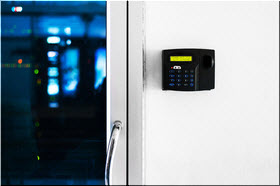 The main types are discussed below.
The main types are discussed below.
New vs. used alarm systems
The first choice you must decide between is whether you should pick a new system or a used system. Those who do choose new are choosing a more advanced system that has been structured around cutting-edge technology. Many offices that choose used systems are looking for a discounted price that would fit their budgetary requirements. This would range from $300 to above $1,000 depending on the type of alarm system you want at your workplace.
Since used systems lag behind a step or two in terms of features and overall build, they are available at a much lower price. The price for a refurbished monitored alarm systems starts from $300 and goes up depending on the brand and functionality of the system.
Since security is a top concern for your business, taking a risk with a used system may not be wise. Moreover, the life of a used system is usually shorter than a brand new one. Consequently, you will have to invest in a new one later on, or spend hundreds of dollars towards repair and fixing costs.
Hard-wired vs. wireless alarm systems
Hard-wired alarm systems use wires to connect the alarm all over the office or building, while the wireless counterpart can be activated using signals and motion sensors. The biggest advantage of a wireless alarm system is that it can't be tampered with easily. Many a times, burglars and thieves can enter office facilities by disconnecting the wires between the alarm system and the control panel or cutting the power supply. When the system is disabled this way, it gives those breaking-in a free ride to take advantage and rob you.
With wireless systems, the connection between the various components is regulated without wires, thus increasing its efficiency. Such a system is not dependent on wires and hence, if any of these wires suffer wear-and-tear or a short circuit, the system does not break down completely.
A clear advantage of wireless systems is that these have high mobility. These can be taken with you when you move from one office building to another, or if you are planning to grow the business. This is one of the biggest concerns for those who are making a move because wired systems can take forever to uproot and then install again; many a times ruining the functionality of the system altogether.
Moreover, wireless systems are much easier to install than wired systems. Wired takes hours to install because these have to be wired all around the facility; while wireless can simply be put in one place with activated motion sensors scattered around the office. The installation of both a wireless system and a wired system requires a professional as there are certain technical details that might end up affecting the system.
The most prominent advantage with wired systems is the cost efficiency. Wired systems will end up saving you a few hundred dollars, at least. Wireless systems, on the other hand, are very expensive because of the motion sensors used. On average, the price of a wireless system starts from $600, while that for a wired system starts somewhere from $200 and goes up.
Additionally, wired systems run on power supplies, hence they do not need to be accessed or meddled with regularly. Wireless alarm systems, however, operate on batteries that have to be changed every few years. You will have to speak with your dealer and figure out a proper way of dealing with wireless alarm systems.
Instant alarm vs. audible delay system
Instant alarm systems send direct signals to your monitoring center (which we get into later in this guide. In this system, there is no delay between the entry of a person or a movement being recorded and the alarm going off.
When it comes to audible delay systems, the system is capable of perceiving sound. This means that if there is a movement or an audible change in the surroundings that is out of the ordinary, the system will catch it (or hear it), process it as a sound and then react. Sometimes offices set the system to a 40 second delay because they do not want the sirens and the alarm going off instantly.
The biggest advantage of an instant system is that the zero delay enables a quick response and reaction to the emergency at hand. The monitoring unit can take action instantly and minimize damage. The audible delay system is advisable for high level industrial environments, banks or Wall Street offices where sound is a big element of everyday activity.
In most cases, instant alarm systems makes it harder for the administration to set and manage the alarms. This is why audible delay systems are so sought after because it avoids the possibility of setting the alarm off by accident.
Back to top
Devices & Features
A monitored alarm system has a number of devices and features with the ability to be customized to meet your particular needs. Monitored alarm systems come in many ranges and types, and the most prominent difference in each comes in the form of the devices that make up these systems. We include some of the most prominent devices below.
Control panel
Control panels are the heart of an alarm system because the entire functionality of the system depends on the reliability of the control panel. Such a panel is available in a variety of forms; while some are wireless, others are connected to the alarm on the back end. These are important parts of the alarm system which is why they also come with a relatively high cost.
- A good control panel will cost at least $180 separately.
With improvement in technology and design, control panels now have a minimum number of buttons to avoid confusion or misuse. Wireless control panels are the most desired nowadays because burglars cannot cut wires to disable the entire system, thus making it foolproof.
Security keypads
Security keypads are usually part of the control panel, but can also be installed separately. A security keypad is used to punch in the codes to activate or deactivate the alarm system. Since it has to be accessed frequently, it is usually installed at spots like beside the main door.
- The prices of security keypads start from $50.
Modern security keypads also offer graphic touch pads that have cameras installed within them. With cutting-edge technology, you will be amazed at the variety of keypads available for monitored security alarm systems.
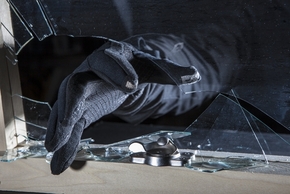 Motion and glass break detectors
Motion and glass break detectors
Important components of an alarm system are the detectors. When the alarm is turned on, the detection system works to notify the people if anyone enters or leaves the property. Detectors are of various types, the two most popular ones being:
- Motion Detectors
- Glass Break Detectors
These add-ons give an additional layer of security that is indispensable for most people. With the need for comprehensive and complete alarm systems on the rise, experts suggest that these detectors are now a necessity.
- Both sensors combined cost more than $50 at the minimum.
Unfortunately, people are more aware of motion sensors, and as a result, neglect to invest in glass break detectors, thinking they are unnecessary. However, it should be understood that motion sensors and glass break detectors have specific purposes.
- Motion detectors: Alerts to a window or door being opened.
- Glass break detector: Alerts to a window breaking or roof glass being drilled through.
A glass break detector works using an audio microphone. This means that the noise created as a result of the "breaking" is what triggers the alarm system. When the detector hears a glass being broken, it activates the alarm and informs of an intrusion. Moreover, motion sensors are considered to be interior protection because it does not take into account how an intruder got in.
Glass or window break detectors are considered outside protection because they catch the intruder before he enters the property. Therefore, having both types of detectors is beneficial to add an extra level of protection to your business.
Door and window contacts
A door or window contact is a wireless, magnetic device that is mounted against the walls. The contact has two screw terminals, one on each side, to attach the zone wires of the alarm system close to the windows and doors. These contacts are extremely useful because they enable an operator to install an alarm system in a very comprehensive manner.
- The price of door and window contacts is a little above $80 at the bare minimum.
The caps for the screw terminal make this small attachment aesthetic, so that the actual screws are not visible. Installation of this device is done such that the contact itself is mounted on the window or door-frame, while the magnet is placed on the window itself. There should be no more than a 1/4-inch gap between the two when the window is closed.
What makes these contacts so useful is the built-in reed switch. When the window or door is closed, the reed switch is activated. Similarly, when the door or window is opened, it disconnects this link, thus activating the alarm system. This functionality makes door and window contacts highly useful and a much-needed device that ensures overall protection.
To make these contacts suitable for use, they are available in different sizes and colors to match the interior of different offices.
Sirens
Where the control panel controls and the motion sensors regulate, the sirens inform of an intruder being on the property. Without sirens, an alarm system is incomplete. For this reason, having sirens is important and manufacturing companies pay a lot of attention to add reliable and high quality components for the siren in the system.
The siren is directly connected to the detectors and the control panel to make sure that there is no lag between a break-in and the sound of the siren is to alert people.
- The cost of sirens starts from $60.
Advanced Features
Monitored alarm system advanced features make it all the more useful for offices that can benefit from cutting-edge technology. Below, we cover essential advanced features you should know about.
Backup systems
Backup systems in a monitored alarm system include a number of components. The primary backup element in this regard is the ability for a system to switch from wired to wireless form. For instance, if your office building experiences a power outage, the wired alarm system would most likely stop working. If the alarm system is equipped with cellular backup, it can switch from wired to wireless in a matter of seconds, with the help of the reed switches installed within.
- Backup systems typically cost $135
Another element of the backup system includes backup batteries. Wireless systems that work on batteries can run out suddenly if the battery hasn't been changed for a while. Most high quality systems have backup batteries that spring to life when the regular ones fail, giving the user time to replace them and continue protecting the office or building.
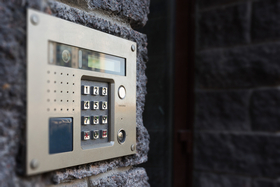 Government agencies, for instance, have a very high need for security, and usually have extended and elaborate backup systems.
Government agencies, for instance, have a very high need for security, and usually have extended and elaborate backup systems.
Two-way monitoring and remote monitoring
Remote monitoring allows business executives to look at the security condition inside and outside their offices even when they are not on the premises. This feature is enabled when the alarm system is connected with wireless connections and can be accessed via the internet. It is ideal for professionals who travel a lot or have multiple offices in different locations.
- This feature costs an extra $50
Two-way monitoring allows the monitoring station to communicate with your office through the intercom system located on the keypad. This features could come in handy if an employee enters the building at an odd hour, setting off the alarm. The monitoring station would be able to call in, and the employee would be able to identify themselves using the intercom.
Security reporting
The security reporting feature gives constant updates to the monitoring company regarding the safety of an office or multiple offices in an area. Using this feature, security companies can regulate who enters and leaves a building, to enhance protection and safeguarding of your valuables and belongings. Security reporting helps personnel measure the alarm system's setup and efficiency.
- This feature costs an extra $50
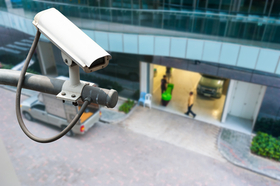 Environment monitoring
Environment monitoring
Environment monitoring features incorporate small detectors and environmental sensors that monitor the external space surrounding the office. There are many components, including:
- Small botz systems
- Security camera
- Environmental sensors
- Scalable rack with wires
These components can notify you when detecting floods and extreme temperatures, minimizing the risk of dangerous conditions in your office. This feature leaves no room for guesses or ambiguities. As a result, the feature is on the expensive side, costing between $350 - $500. Government agencies and consulates use environment monitoring extensively.
Fire alarm integration
All wired and wireless systems give you the option to integrate a fire alarm system with the new security system. The more comprehensive a security system is, the better equipped it will be to keep the store or office safe from break-ins and fire accidents.
As the technology of alarm systems progresses, other systems could become outdated or defective. As a result, fire alarm integration is an important addition to consider.
- This system can cost $150 or more
Access control
Another important feature of a security system is access control. Using access control will help you regulate who enters and leaves the building. This feature is your electronic gatekeeper because it lets you observe the flow of traffic, thus keeping out unauthorized people. The result is a reduced chance of thefts and break-ins.
- These start at $200
Monitoring Services
Monitoring services are an integral part of the network that should be in place for foolproof protection. These services, usually offered by a security company, are responsible for ensuring a safe environment by monitoring the security system, confirming break-ins and if need be, dispatching authorities. The three services that most businesses require for security are:
Security monitoring
Monitoring service personnel's first responsibility is observation. When an alarm is triggered, it's up to the monitoring service to act depending on your pre-approved process. For instance, monitoring service personnel might call the office and request a passcode to confirm an accidental trigger, speak through an intercom to see if anything is wrong or call the designated keyholder. If the passcode is incorrect or suspect something is wrong, they will then send authorities.
Service dispatching
Depending on the alarm triggered - whether it's a fire alarm for instance - the correct authorities are dispatched, including police officers or firemen. In the event that the keyholder does not respond to the monitoring services' call, a standard police squad is sent to assess and handle the situation accordingly.
Choosing a monitoring service
The best way to choose your monitoring service wisely is to meet with them. Meetings are usually set up free of charge and should be used as a question and answer session to understand what will be offered to you by the company and its agents.
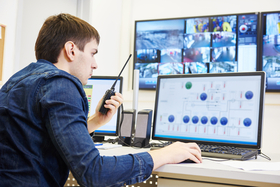 Make sure that the monitoring services you pick:
Make sure that the monitoring services you pick:
- Are always reachable
- Are reliable and trustworthy, with plenty of expertise
- Are certified and well-known in the industry
- Are ready to customize and scale their packages for you
Choosing a Dealer
Asking questions and inquiring about various security systems will help you make better decisions for your business and employee safety. Some of the most important questions to ask a dealer when purchasing a security system should address the following topics:
- Installation: Is the system easy to install? Can the IT team install it or will the professional monitoring team be called in? How long does it take to install?
- Training: Is training required to operate the system? If yes, how will this training be conducted? Many offices run test drills to make sure that the alarm system is working properly and the required personnel have understood how to operate it.
- Support/maintenance: Always make sure that you ask the monitoring team about maintenance requirements. How often will the system need maintenance? How much will it cost? Does maintenance depend on the type of system you purchase?
- Customizations: This is a very important question. Given that all alarm systems are made to fulfil a particular purpose, they should be customizable to the needs of the buyer. Ask the dealer if customization is possible and the extent to which it can be done. Will it result in extra charges? If yes, how will this affect the overall price of the system and its monthly costs?
Get Quotes
- We contact sellers
- They compete for your business
- Software updates: The alarm system is made of hardware components and software components. The hardware includes the devices, while the software is the interface that is programmed to make the hardware components come to life. While you can see the hardware, you can only inquire about the software.
Ask the dealer about the software in the system and the version/model that is being used. Is it the latest one? Will it need upgrading soon? Remember to ask about upgrading costs; not every dealer does it free of cost. - Cost breakdown: The most prominent cost of the monitored alarm systems is the investment required to purchase the actual system. The prices given in the previous section are for the most basic components, therefore, when you purchase add-ons like detectors, motion sensors, glass break sensors, window catchers, etc., the cost increases because these have to be purchased separately.
Apart from these, software upgrades, customization, support and training can all result in additional costs that should be pre-approved by the concerned department of your business.
Choosing a dealer
There are a number of tried and trusted ways to choose a dealer. For one, you can ask around in your business circle about a reliable dealer your colleagues have dealt with in the past. You have to make sure that your dealer is trustworthy. No matter how good they may seem if you cannot trust the person who is selling something to you then you’re automatically at a disadvantage. There are so many other factors that also come into play when choosing a dealer is concerned such as experience and industry knowledge.
You should also ask the dealer for references that are relevant to your industry so that you do not have to regret getting the system at any time in the future. Ready to find a dealer? Start here.
